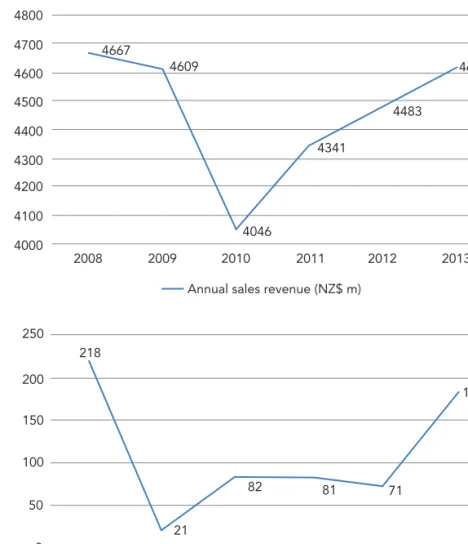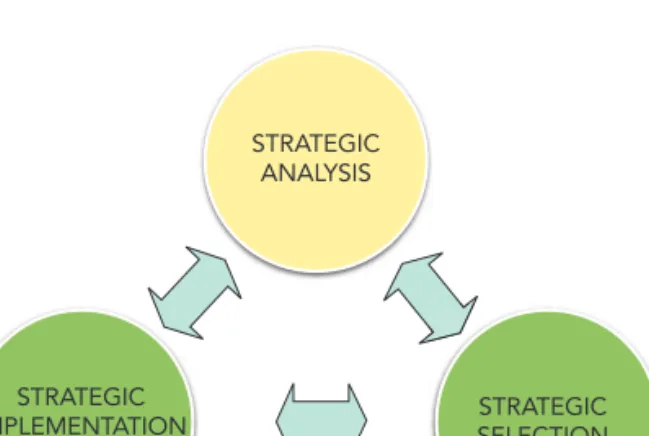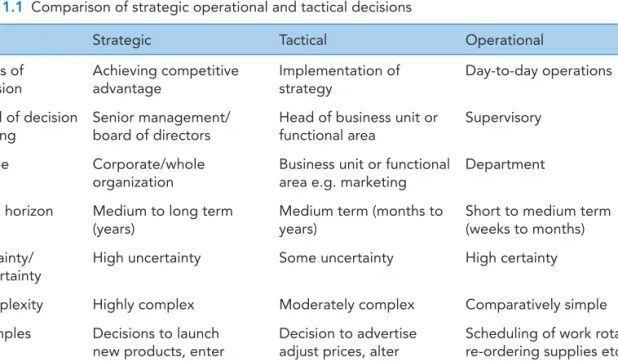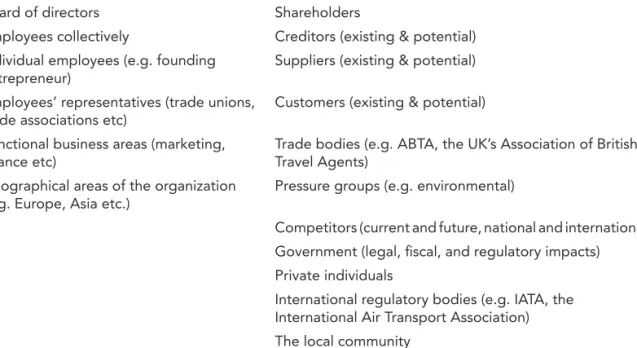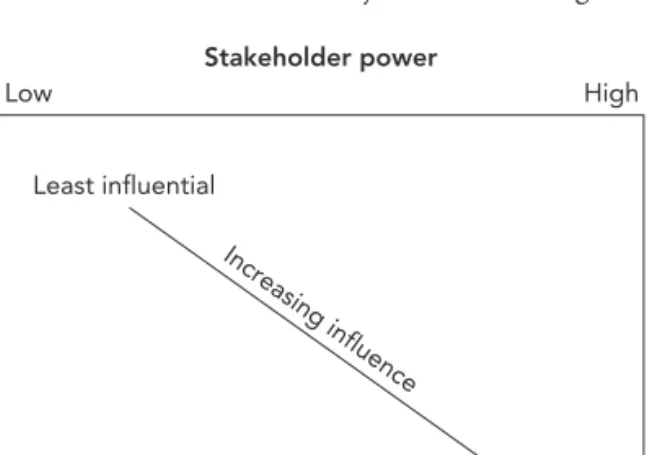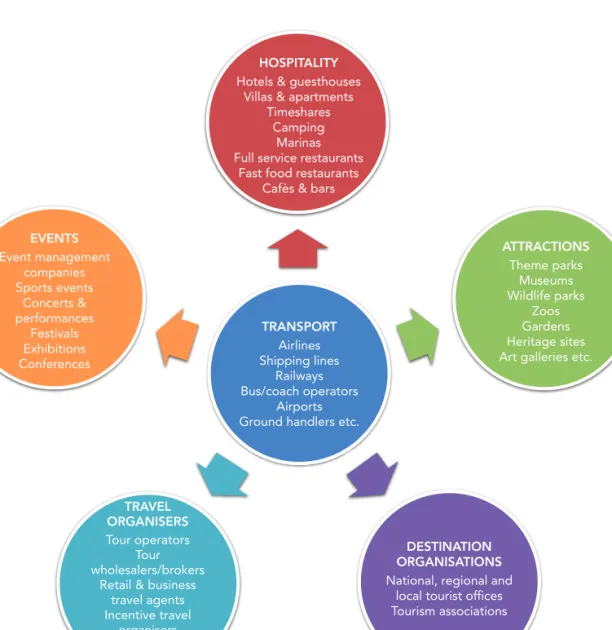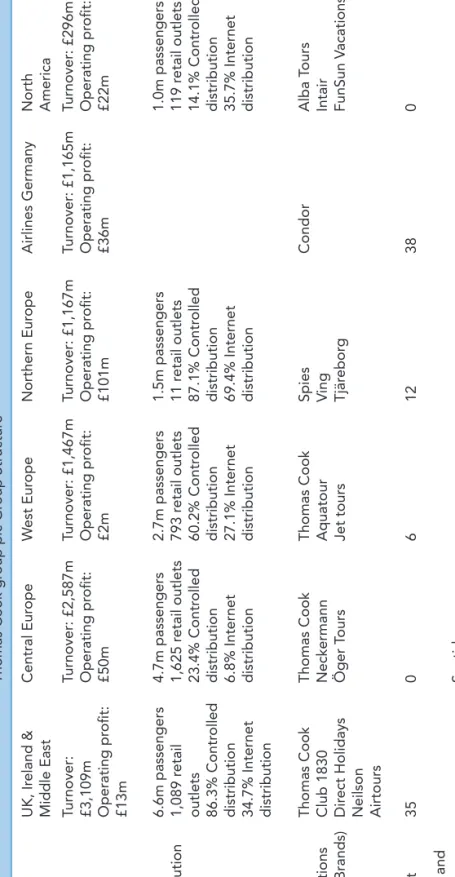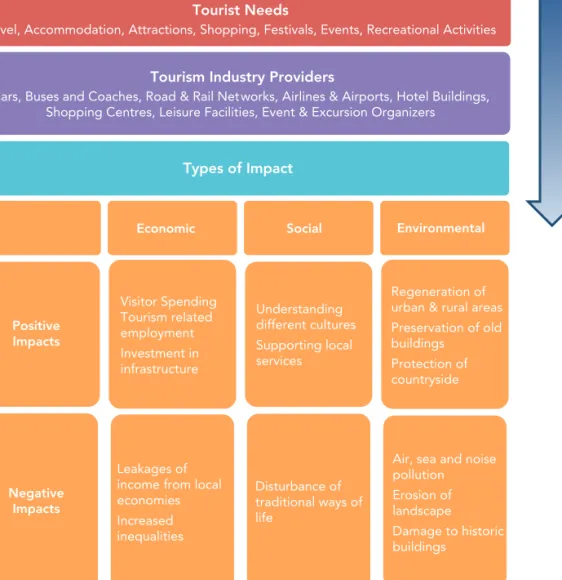Strategic Management for Tourism, Hospitality and Events is the must-have text for students approaching this subject. The book should also be of interest to practitioners in tourism, hospitality and events.'
How to use this book
Provide review and discussion questions to enable you to test your knowledge and understanding as you progress through the book. Enables you to link the material in each chapter to illustrations contained in the case studies at the end of the book.
Introduction
An introduction to the approach that this book takes to the study of strategy – The strategy process
A rationale for the approach taken by this book in applying strategic management tools, techniques and concepts in the context of the tourism, hospitality and events sectors – Strategy in a tourism, hospitality
The strategy process
Chapter 1 discusses concepts, definitions and the nature of objectives
Chapter 2 highlights the particular characteristics of tourism, hospitality and events which are relevant to understanding how organizations within the industry are managed in a strategic way
Strategic analysis
Strategic selection
It is at this stage that the importance of the strategic analysis can be understood. Once we become familiar with it, we usually formulate a list of the options open to the organization, paying particular attention to how each option will solve the most important problems.
Strategic implementation and management
The feedback link
To ensure that the chosen strategy is still appropriate, therefore, a review of the strategic analysis is necessary. If the environment (internal or external) has changed, however, a modification of the strategy may become necessary.
Study progress
If nothing has changed, the company may decide that no modification to the strategy is necessary.
Strategy in tourism, hospitality and events (THE) contexts
It can be argued that tourism, hospitality and events represent distinct sectors with their own literature and constructs. In fact, it can be further argued that it is not only possible to cover all three sectors together at a strategic level, but it is desirable to do so.
Tourism management
For example – the operational details of managing a tour operator will be very different from managing a hotel as they operate in very different ways and require different skills. The operational issues also vary widely between tourism, hospitality and event management, so while it is possible to take a combined approach to the study of the three sectors at a strategic level, such an approach is not possible at an operational level.
Hospitality management
Tourism products have a number of characteristics that are relevant to the way in which they are managed and are thus relevant to any business-oriented study of tourism. The operational management issues can be seen as being very context-specific, varying greatly depending on the type, location and scope of the company and thus beyond the scope of this book.
Events management
- Attract tourists whose spending generate economic benefits
- Create positive images for the destination and help brand it
- Contribute to place marketing by making cities more liveable and attractive to investors
- Animate cities, resorts, parks, urban spaces and venues making them more attractive
- Act as catalysts for urban renewal, infrastructure development, voluntarism and improved marketing capability
The subject area is emerging and Getz (2007) defines event studies as "the study of all planned events, with particular emphasis on the nature of the event experience and the meanings attached to events and the experience of events". Events interact (with other related domains) so that they are used for different purposes and differ in the nature of the experience.
Tourism, hospitality and events management – an integrated approach
Much of the relevant literature concentrates on detailed operational or context-specific aspects of tourism, hospitality and events. Tourism, hospitality and events share many of the same characteristics and issues for management that are considered in various parts of this book.
Introduction and chapter overview
What is strategy?
Your objective is clearly stated as arriving in Paris at a certain date and time
We can easily understand that people depend on certain vital inputs such as air, water, nutrition, heat, shelter, etc., but organizations have similar needs. Physical (tangible) resources – Land, buildings (offices, housing, warehouses, etc.), facilities, equipment, stock for production, means of transportation, etc.
However, if it turns out to be successful, the sustainable behavior is said to have succeeded. Clearly, not all companies are equal when considering such criteria.
Perspective strategies are about changing the culture (the beliefs and the 'feel'; the way of looking at the world) of a certain group of people - usually the members of the organization itself. Managers at the strategic level require multi-conceptual skills – the ability to consider the effects of various internal and external influences on the enterprise and the possible ways in which strategy can be adjusted to account for such influences.
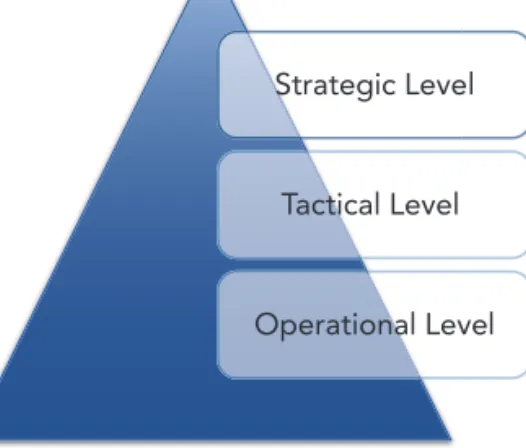
Distinguish between strategic, tactical and operational level decisions in the TES example
The top, where the strategic decisions are made, is thin while the bottom (operational decisions) is fatter. This representation is intended to show that strategic decisions are rarely made, while tactical and operational decisions are made more often.
Explain what is meant by the term overtrading
The different time horizons for decision making are illustrated below in the case of a group of hotels. The different levels of decision-making are reflected in the way organizations set goals.
Explain why the hierarchy of decision making might be differnt in some service based companies such as those in THE
A group of hotels demonstrate the different levels of decision-making and the different time horizons usually involved at each level. Explain why the hierarchy of decision-making may be different in some service companies, such as those in THE.
Why is service delivery likely to be so important to all managers at every level in this case?
The corporate mission, vision, and objectives can cascade down the organization's hierarchy. Since the mission statement represents a long-term perspective, it is often held by organizations for many years, despite the many changes that may occur within the organization and in the external environment.
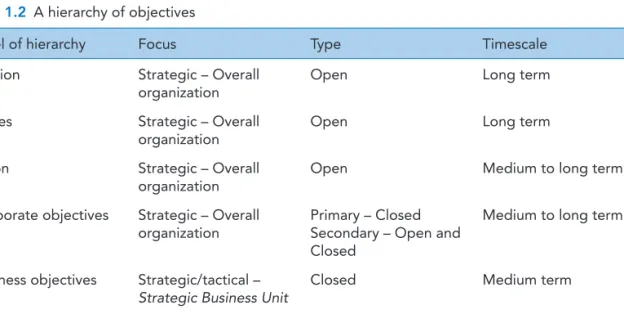
Why do you think the Southwest Aitrlines mision statement has remain unchanged for so long?
Similarly, in a study of the Dutch mission statement, Sidhu (2003) finds that mission statements can lead to better performance. Southwest Airlines' mission statement (which has remained unchanged from January 1988 to the present) is a testament to the enduring nature of such statements for many organizations.
What sort of behaviour do you think Southwest Airlines is trying to encourage by employees?
An indication of the real market share or market position that the organization should aim for. Tourism becomes a vibrant and important contributor to the sustainable development of the state of Kerala.
Assess who you think the primary audiences for the statements might be in each case?
As organizers, we understand the importance of the community in increasing the number of registered participants and the quality of programming at the SXSW Interactive Festival. The PanelPicker also allows anyone in the community to vote on which suggested ideas should be part of the event (and explain their vote through comments).
How effective is each statement in your judgement and why?
Two leading authors refer to them as “the goal that the firm seeks and the criteria that the firm uses to determine its performance” (Glueck and Jauch, 1988:12). M - Measurable - which can be quantified so that they can be measured and it can be assessed whether the objectives have been achieved;.
Which stakeholder is likely to exert the most influence upon the organization’s objectives
The actual influence that a stakeholder is able to exert will depend on the stakeholder's position in relation to their ability and willingness to influence. A stakeholder with high power and high interest will be more influential than one with low power and low interest.
The stakeholders that are most likely to be in potential conflict over strategic objectives (where two or more stakeholders are in close proximity in the high power–high interest part of the map)
The National Trust movement spread rapidly across Australia, with other countries establishing National Trust offices in the 1950s and 1960s. The National Trust of Australia relies heavily on community support gained through membership subscriptions, sponsorship, donations and legacies, property acquisitions and retail sales.
Identify the principal stakeholder groups in this case
The National Trust of Australia is a community-based non-governmental organization committed to promoting and preserving Australia's Indigenous, natural and historical heritage through its advocacy work and the conservation of heritage sites and objects. Each State and Territory National Trust is a fully autonomous entity in its own right, responsible for the management of its own affairs.
Which stakeholder groups are likely to be the most influential and why?
Preston (1995) 'The Stakeholder Theory of the Corporation: Concepts, Evidence and Implications', Academy of Management Review. In this chapter we look at the nature of service products and the particular distinguishing features of THE products.
Tourism, hospitality and events as service industry sectors
Service product characteristics
- Does this case illustrate whether heterogeneity is; ‘good’ or ‘bad’ when delivering services in THE contexts?
- What key lessons about motivating staff might be drawn from the experience of Games Makers?
- Explain the challenges Radisson faces in managing heterogeneity
- Explain how Radisson has responded to these challenges
Eg. – the enjoyment of a foreign holiday cannot be separated from the personalities who go on this holiday: the staff employed by the travel agency; airline crew; hotel staff;. For example - the importance of frontline staff in terms of customer service is illustrated by the case of an airline and its staff.
Tourism, hospitality and events – specific service characteristics
- Explain the characteristic of THE contexts to which loyalty programmes represent one response
- Consider what problems might arise for managers in a THE company because of the spread of loyalty programmes throughout the industry?
- Explain the nature of the seasonality issues faced by Kuoni
- Explain the actions managers in a company like Kuoni might take to deal with the seasonality issues
- Explain the issues raised by Grootbos in relation to the impacts of tourism
- Explain the business model Grootbos has developed and assess its effectiveness
- Explain how Accor was affected by the 9/11 terrorist attacks
- Explain the managerial responses of Accor after the attacks
- Explain what the lessons of this case might be for dealing with crisis situations for THE companies
- Consider other examples of crisis situations that have occurred for THE organizations
Any discussion of the impacts of tourism usually focuses on the effects of so-called "mass tourism". Many of the aspects discussed in this chapter are relevant to smaller firms operating in THE sectors.
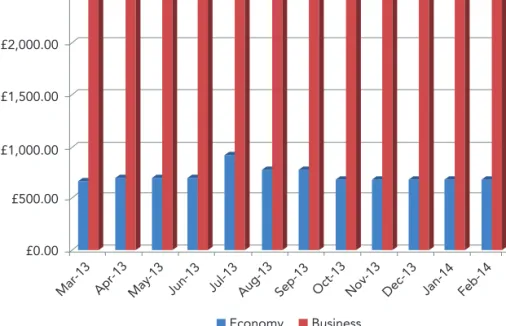
A summary of the key characteristics and their implications for THE managers
Explain which characteristics of THE does AITO help SMEs with in competing with larger competitors
Explain how belonging to AITO helps SMEs compete effectively
The Business of Rural Tourism: International Perspectives, London: International Thomson Business Press, s. 2012) Crisis Management in the Tourism Industry, London og New York: Routledge. Kumar (2011) 'Hospitality Crisis Management Practices: The Case of Indian Luxury Hotels', International Journal of Hospitality Management Holiday Makers, Oxford: Butterworth-Heinemann.
Introduction Internal analysis
Purposes of internal analysis
The components of internal analysis
In Chapter 1, we encountered the concept of competitive advantage as one of the main objectives of corporate strategy. This is the first of four chapters dealing with the internal analysis of THE organizations.
Resources, competencies, core competencies and competitive advantage
The basis on which their key competencies are achieved is discussed later in the chapter. Those with only average or below-average performance have competencies and resources (without which they would not be able to compete in the industry at all), but not core competencies.
Resource analysis
- What are the reasons for public sector bodies forming separate companies for developing and managing events?
- Consider the issues that might arise from public and private sectors working together in the way described
- Summarize the purpose of carrying out a resource analysis for a THE company such as Marriott
- What conclusions would you draw from the resource analysis of Marriott?
A number of points are important when considering the use of resources and their management in THE sectors. For example, in THE supply is often relatively fixed (at least in the short to medium term), while demand fluctuates.
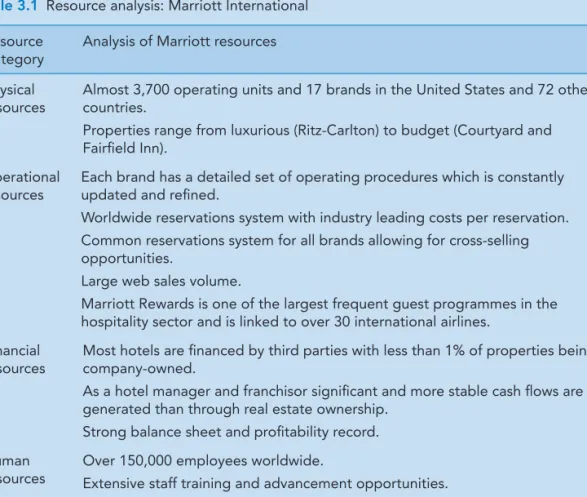
Competencies
Core competencies
However, in some, albeit limited, cases, core competencies can be maintained over a longer period of time. For example – Kay (1995) identified the core competencies of British Airways as: its dominance in a key London hub (Heathrow Airport); licenses to fly on certain routes; and its strong brand attributes.
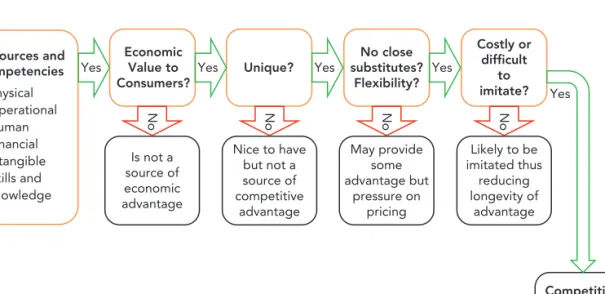
Outcomes of the analyses
What threats might emerge to challenge British Airways’ core competencies?
What steps might British Airways take to defend its core competencies?
From distinctive capability to competitive advantage
Analysis of value-adding activities
- changing customer perceptions of the product so that they are willing to pay a higher price than for similar products produced by other businesses; or
- reducing operating costs below those of competitors
- What do you consider the motivations for outsourcing to be in the airline industry?
- What factors might prevent outsourcing being developed more widely in THE contexts?
For example – the value chain of Thomas Cook plc (a vertically integrated UK-based tour operator), includes customer transport and retail and internet distribution. This chapter continues the internal analysis of organizations in examining one of the functional areas into which organizations are often divided – the human context.
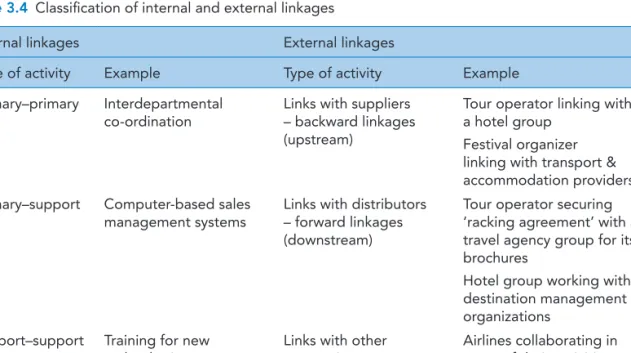
Human resources
- Why might The Australian Open be described as a ‘pulsating’ organization?
- What would you consider the human resource challenges for managers might be in this case?
- Why does Starwood give so much attention to employee recruitment?
- Consider the difficulties involved in managing staff at chains of hotels such as those managed by Starwood brands
- What managerial difficulties is the Ritz-Carlton chain attempting to overcome through employee empowerment?
- Consider the benefits and potential drawbacks of empowerment in this case
- People who are carefully selected, well trained and highly motivated are more likely to deliver services of high quality
- Since the quality of services offered is high they are likely to be valued by customers leading to customer satisfaction and loyalty
- This leads to the creation of a competitive advantage since a competence (delivery of high quality ser- vices) has been successfully delivered to customers (in a market)
- Gaining advantage over competitors leads to high level of organizational performance and business success
- The success of the business allows for additional resources to be deployed in rewarding existing people and recruiting additional people of a high calibre who are attracted by the success of the organization
- Identify whether or not a problem exists
- Develop service quality standards based on customer expectations. (Gap 2)
Hanlon and Jago (2004) developed the concept of the 'pulsating' organization to describe many organizations in the events sector. Each of the human resource characteristics identified can pose challenges for managers working in THE.
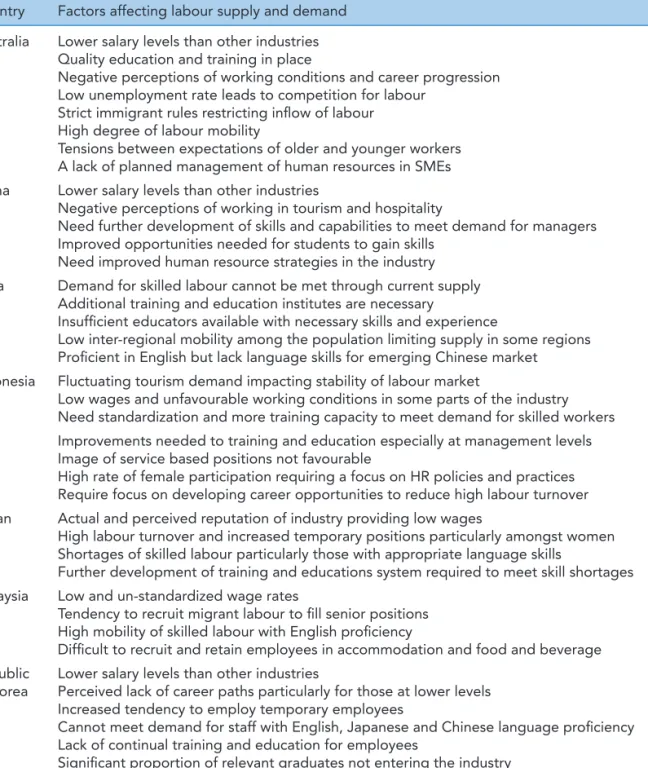
The human resource audit
A key tool in identifying where gaps exist is the HR audit, discussed in the next section. Number of employees by multiple counting methods - total number, by department, by location, by skill type, by grade or place in the hierarchy, by age or length of service, by gender and by ethnic group.
Organizational culture
- Explain what is meant by critical success factors and identify what you think they are in this case
- What issues in relation to human resources might China’s Home Inns faces when expanding in China?
- Consider the benefits and potential difficulties volunteers bring to events such as those in Edmonton
- Consider how efficiently cities such as Edmonton are able to utilize resources in providing and managing events
- Explain the main features of Southwest’s corporate culture
- Consider the difficulties that Southwest might have in maintaining its corporate culture as it grows and develops
The national or regional character of the areas in which the organization's activities take place. One of the most common ways to understand an organization's culture is by using the cultural web (Johnson, 1992).

Cultural typologies
- Consider what purpose is served by producing a cultural web for a company such as Westjet and how might it be utilized by managers
- Consider a THE organization you are familiar with and apply the cultural web analysis to it
- organizations change over time;
- several types or variations of culture often exist in the same organization;
- different cultures may predominate depending on the headquarters and ownership of the company
Greenidge (2006) 'Human Resource Management and Performance in the Barbados Hotel Industry', International Journal of Hospitality Management. Shum (2011) 'Promoting Innovation in Hospitality Businesses through Human Resource Management Practices', International Journal of Hospitality Management.

Financial resources in tourism, hospitality and events contexts
- What is meant by cash management?
- Why is cash management important to an organization such as Live Nation?
- Explain the nature of the foreign exchange exposure for the German Airline
- Explain the nature of the foreign exchange exposure for the British based outbound tour operator
- Explain what is meant by capital intensity
- Contrast the capital intensity of Carnival Corporation and Travel Counsellors and comment on the implications
- Why is financial management important for hospitality managers?
- Distinguish between the likely focus of financial management at the corporate and property level for hospitality managers
The relative capital intensity of parts of the industry has three important implications for managers working in the industry. In contrast, travel advisors represent a labor-intensive (as opposed to capital-intensive) part of the industry.
An introduction to financial analysis
What were the financial issues which Thomas Cook faced when the new CEO was appointed?
Explain the measures which the new CEO took in order to address the financial issues
The requirement to pay interest to 'service' the debt can be a huge burden on companies when earnings are weak. For example – the cost of borrowing on a credit card is much higher than a mortgage (where the security against the loan is mainly responsible for the difference).

Financial analysis
- What were the financial challenges that Air New Zealand faced in 2012?
- What measures did Air New Zealand take to improve financial performance?
- Performance ratios;
- Efficiency ratios;
- Liquidity ratios;
- Investors’ ratios;
- Financial structure ratios
- Explain what the risks related to foreign exchange exposure are for British Airways and Live Nation
- Explain why managing foreign exchange exposure is often a particular difficulty for managers involved in THE
In the next few sections, Air New Zealand will be used to illustrate some of the "tools" of financial analysis. This ratio should be used with caution as the company's capital structure can affect the ratio.
